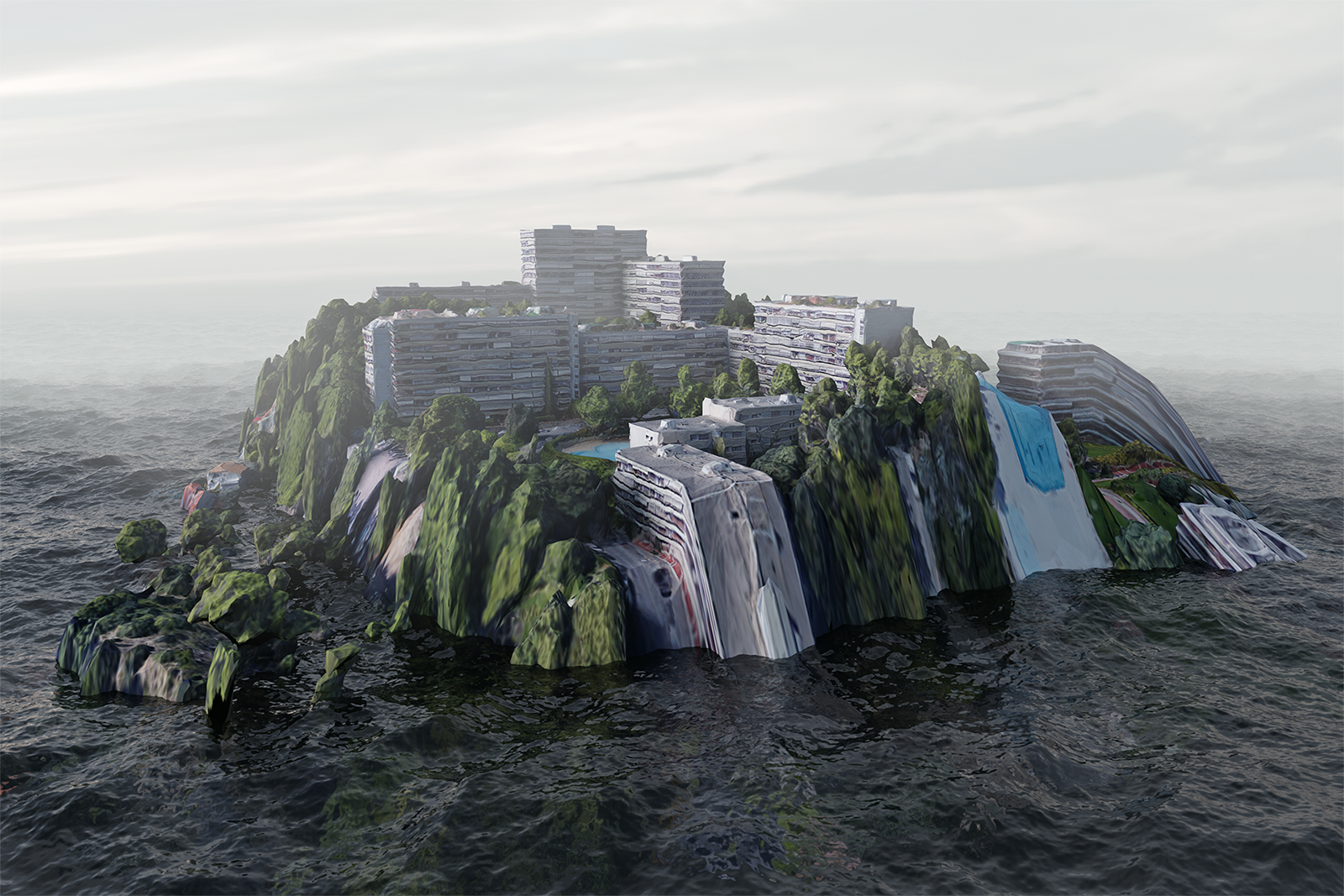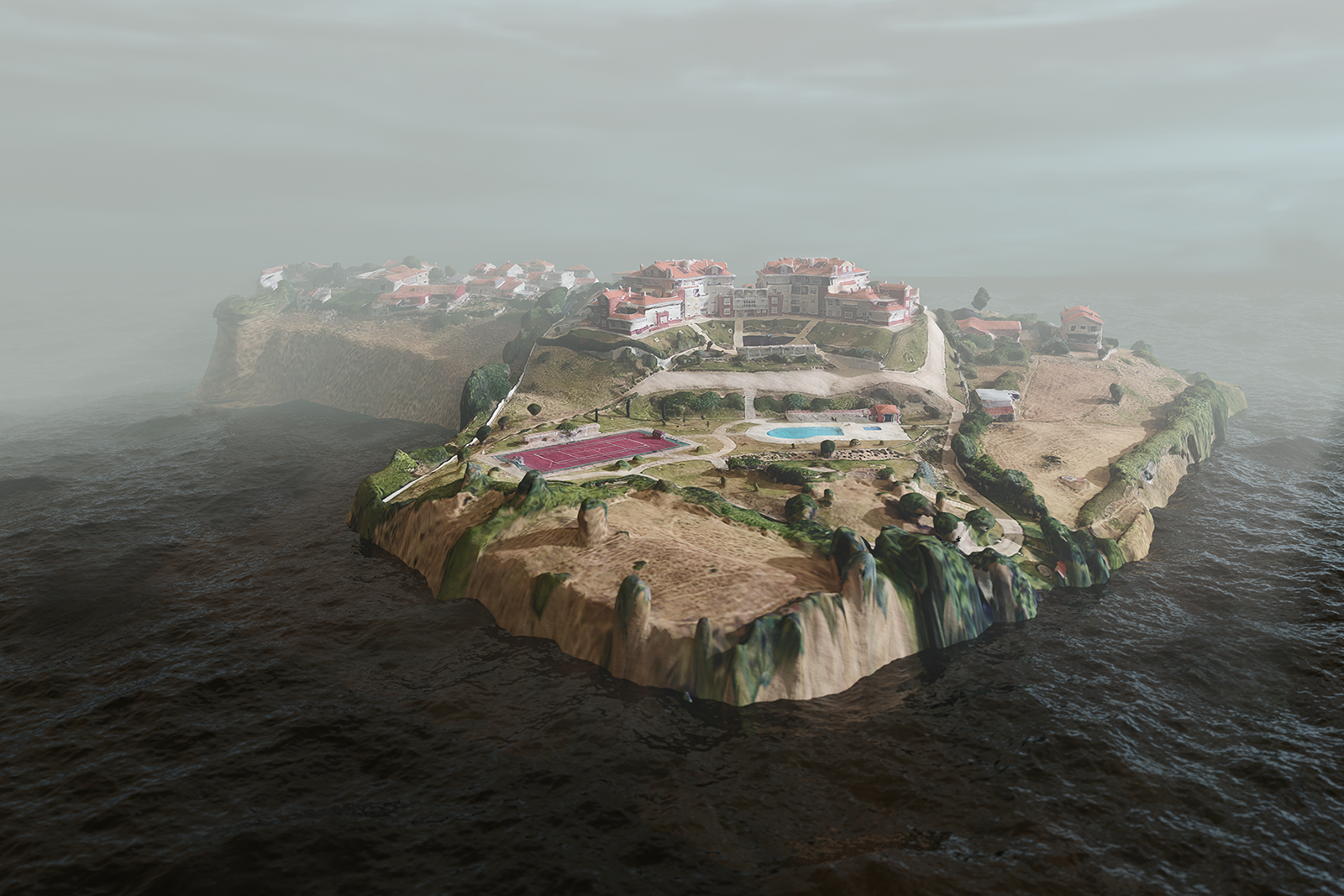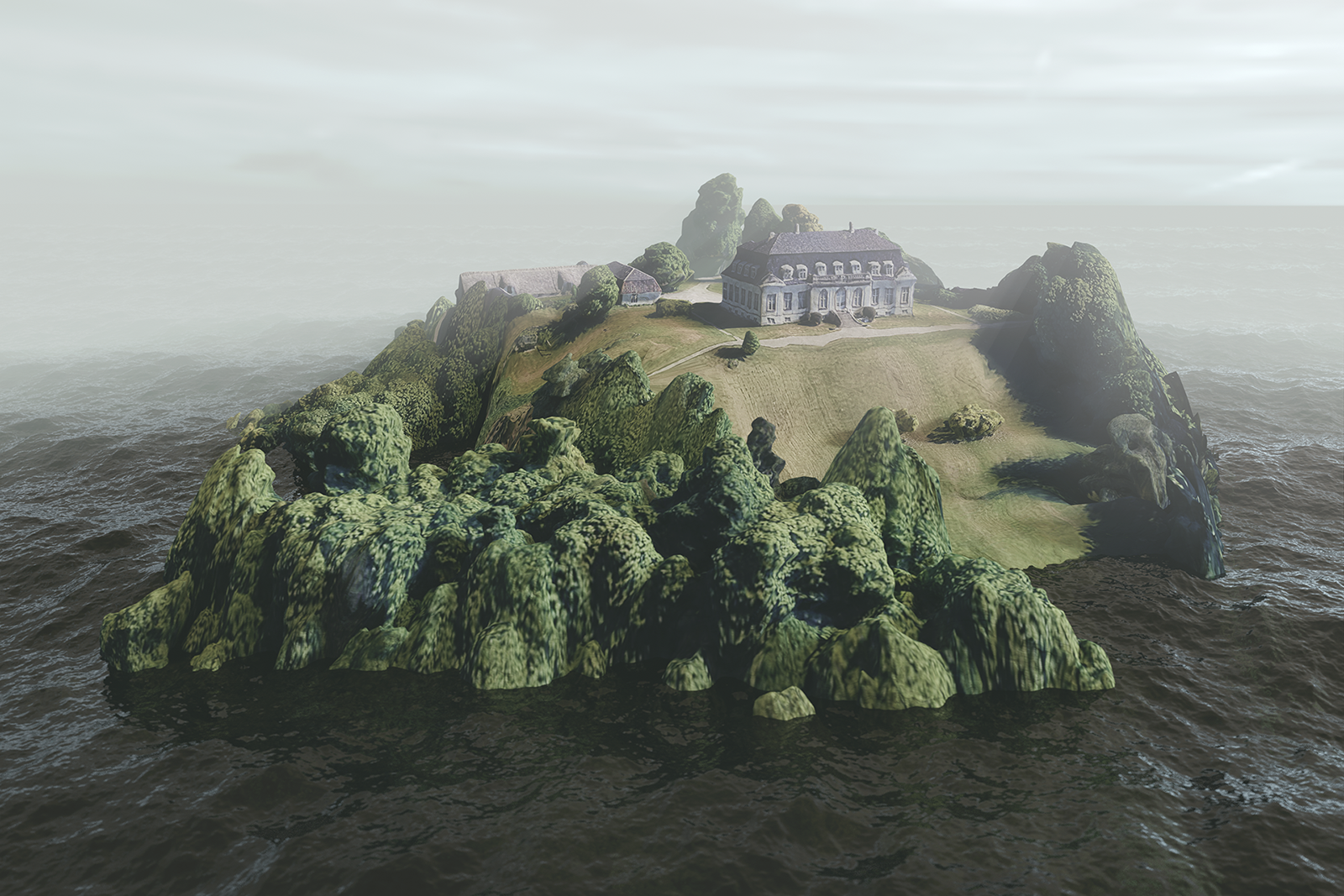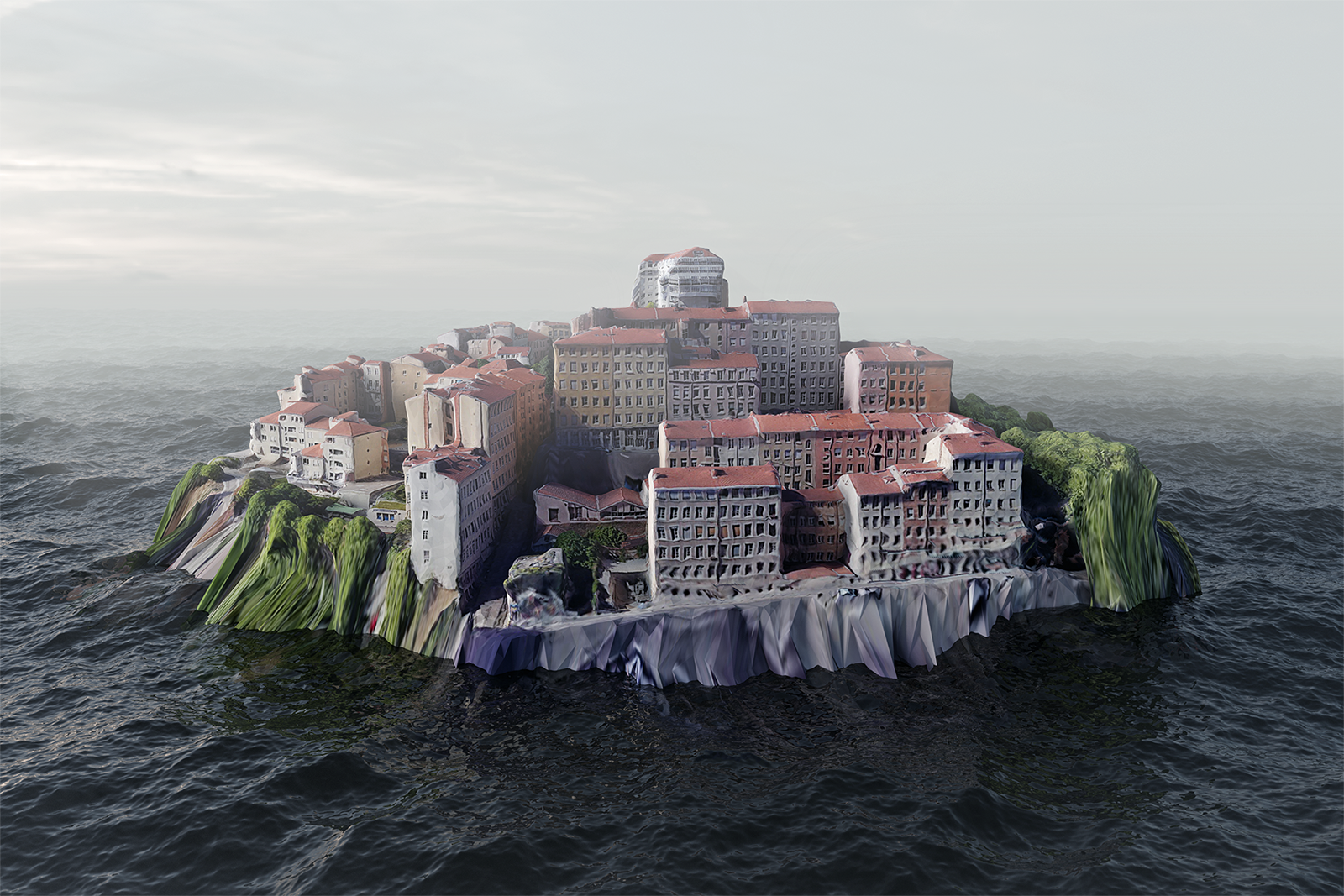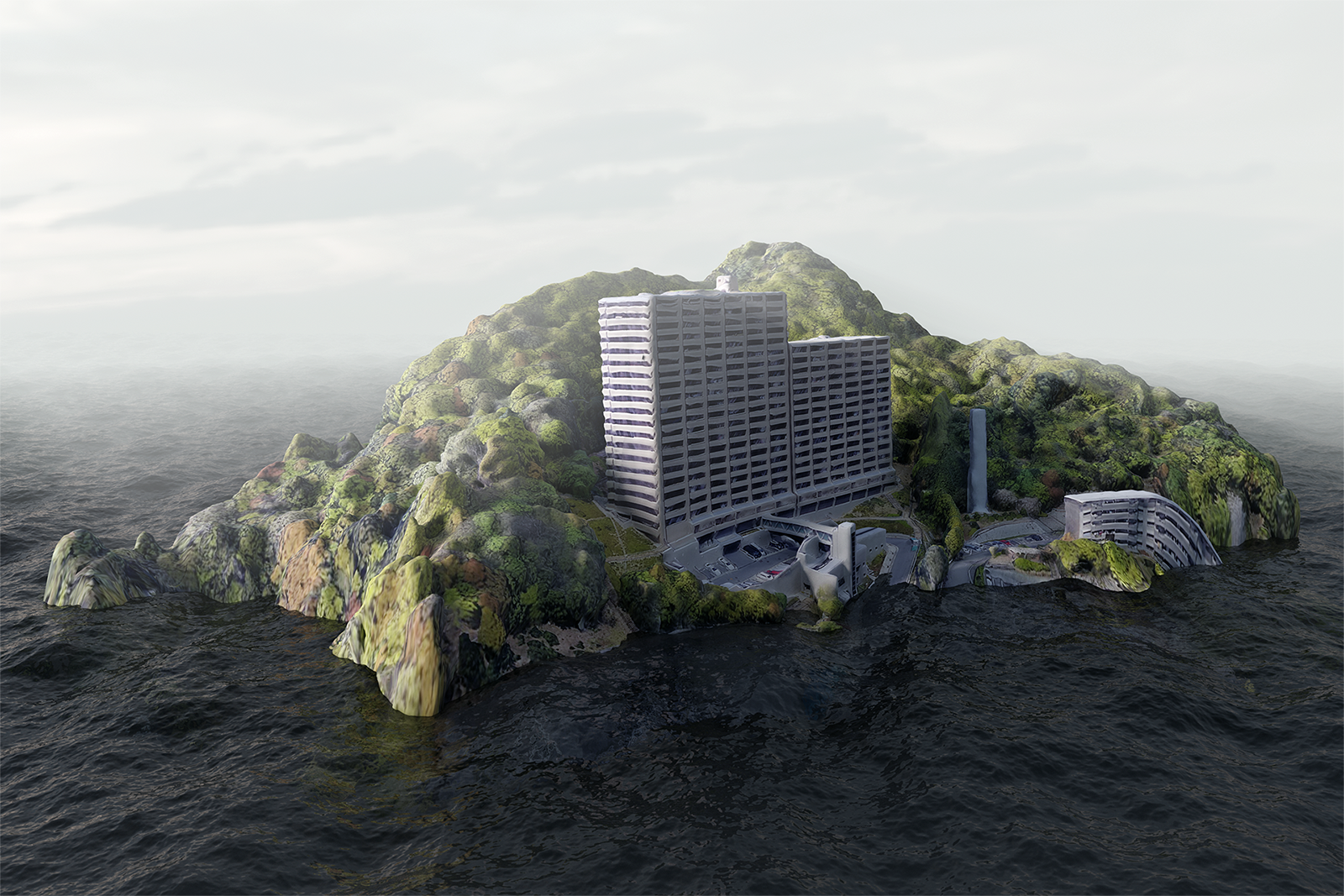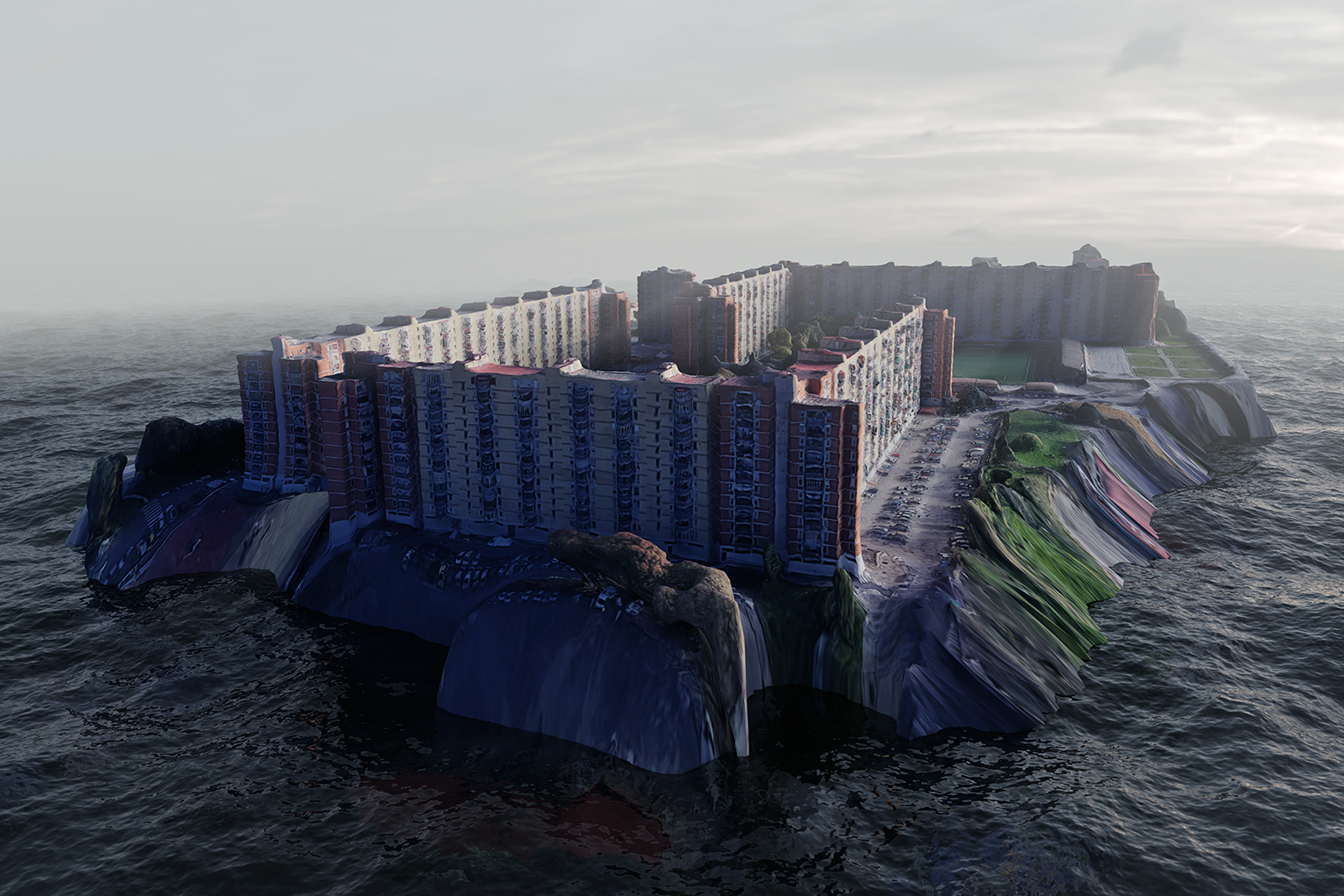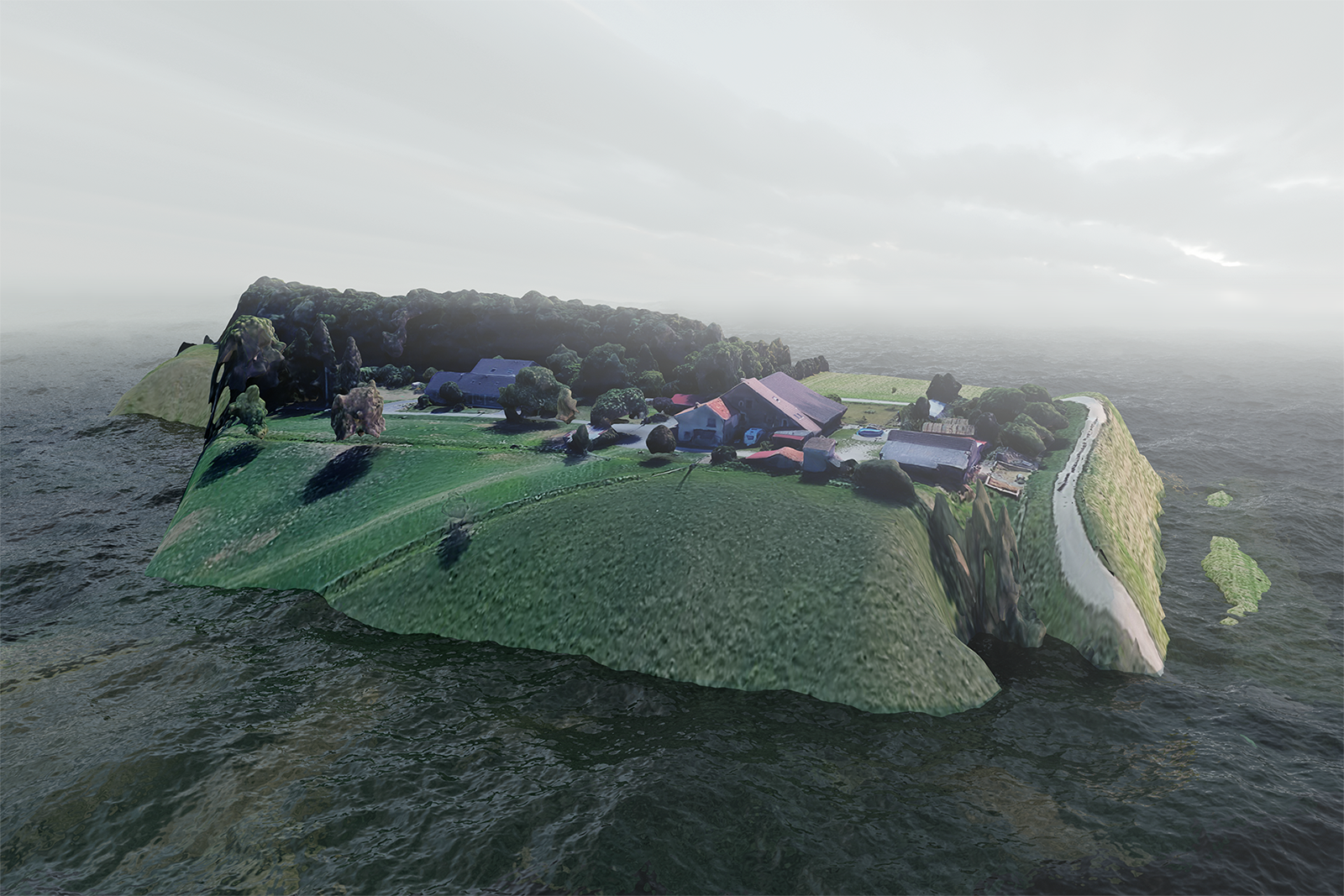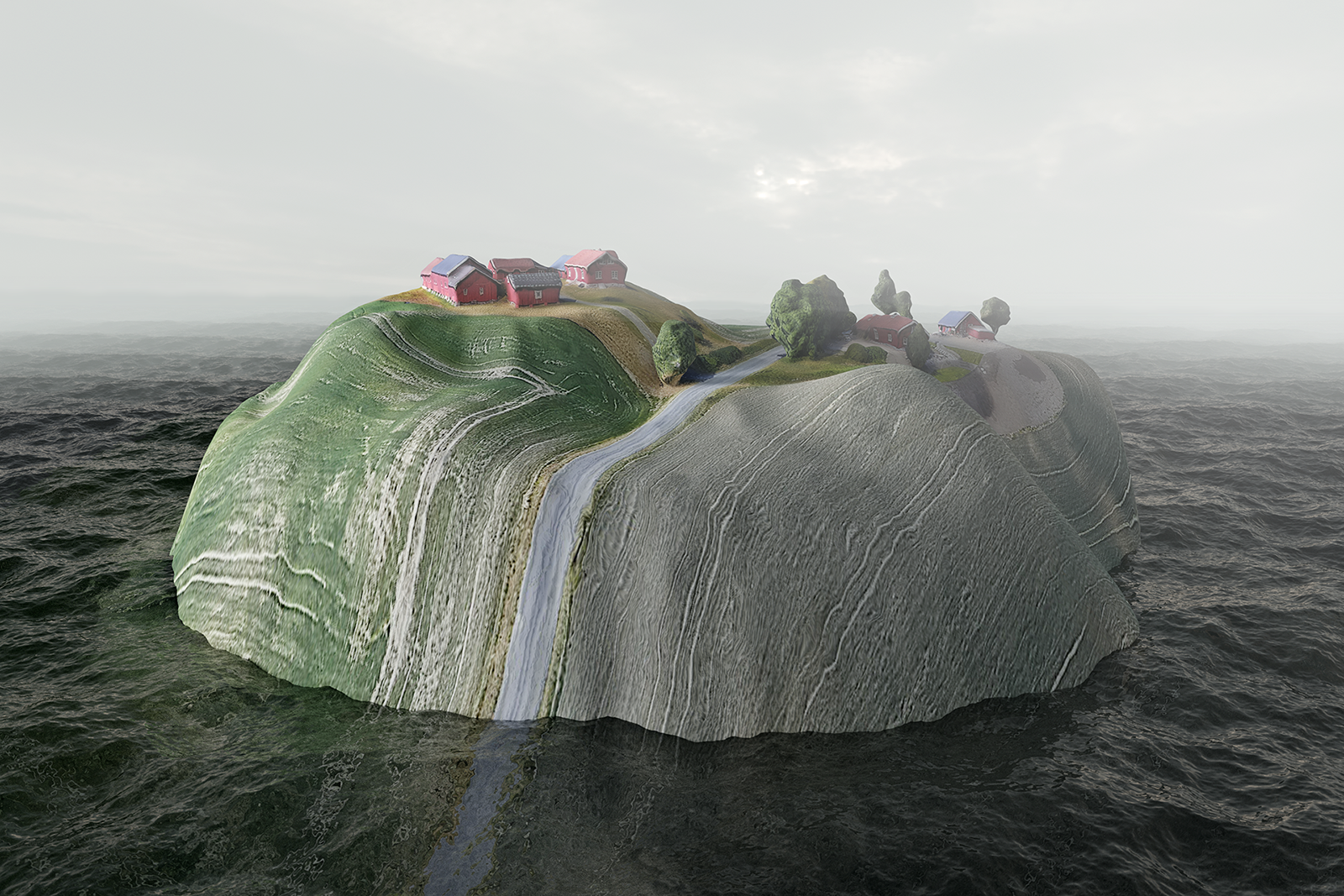Framed Earth s'inscrit dans une série de travaux artistiques autour du monde généré par Google Earth, réalisés par Pierre Lafanechère & Dylan Cote
Les paysages de Framed Earth, plongés dans l'océan, s'attardent sur des habitations, des lieux de vie. Devenus îles, ces morceaux de mondes nous rappellent la manière dont nous habitons l'espace numérique et parcourrons l'océan de données. Nous naviguons d’île en île, de bulles en bulle d'information, plus ou moins peuplées, isolées, connectées entre elles. Derrière le cadre tangible que représente les bords de nos écrans se dessinent des cadres informationnels qui séquencent, divisent et réagrègent les mondes que nous habitons.
Habiter ce n'est toutefois pas simplement occuper spatialement un endroit, c'est aussi y projeter ses affects et en y construisant une histoire. Ces habitats numériques imaginaires se déploient sous plusieurs formes et inspirent différents récits, parfois absurdes, voire angoissants, entre désertion autarcique et monde post-apocalyptique.
Framed Earth is a series of pictures part of an artistic reasearch about the world that Google Earth generate, created by Pierre Lafanechère & Dylan Cote As it is scanned, and so deformed by the lack of data, the planet is turning into something new and take its autonomy from its physical counterpart. Our approach consists in scanning this already digitized Earth in order to enhance its surreal characteristics made from glitches and distortions. Thereby, we assert its fictionnal dimensions.
Framed Earth's landscapes, plunged into the ocean, focus on dwellings and other places to live. As islands, these fragmented worldsremind us of how we inhabit digital space and browse the sea of data. We sail from filter bubble to filter bubble, as from island to island, more or less populated, isolated, connected. Behind the edges of our screen, there is information frames that sequence, divide and reorder the worlds we living in.
However, living somewhere is not only spatially occupying a place. It is also projecting one's affects into this place and creating a story about it. These imaginary digital habitats unfold in many forms and inspire different narratives, sometimes absurd, even anguished, from autarkic desertions to post-apocalyptic worlds.
